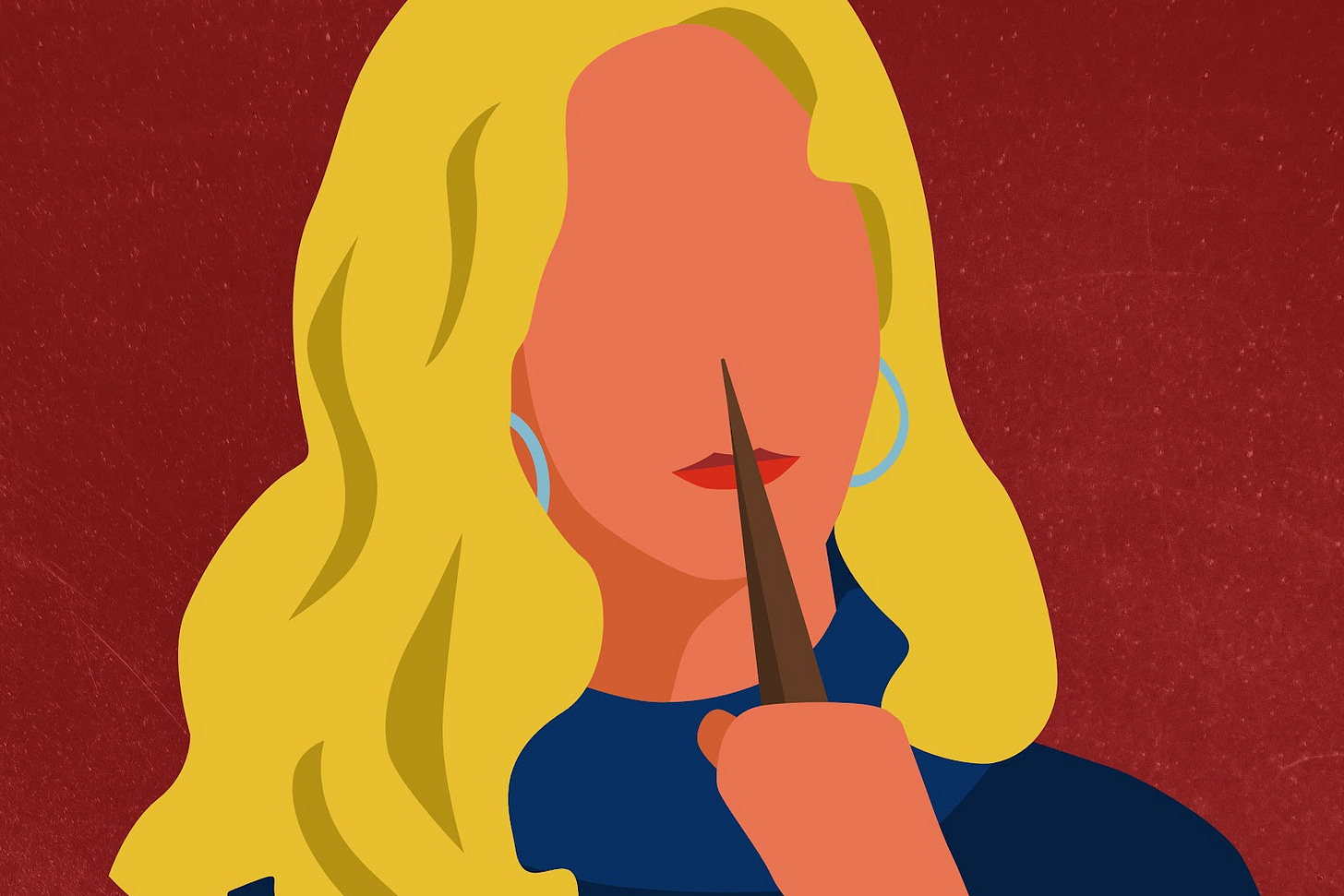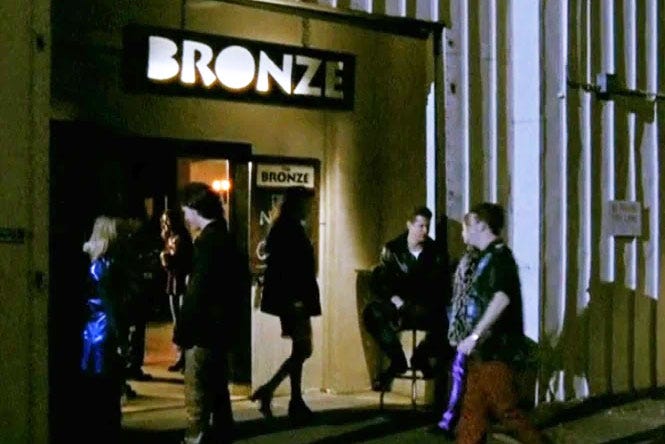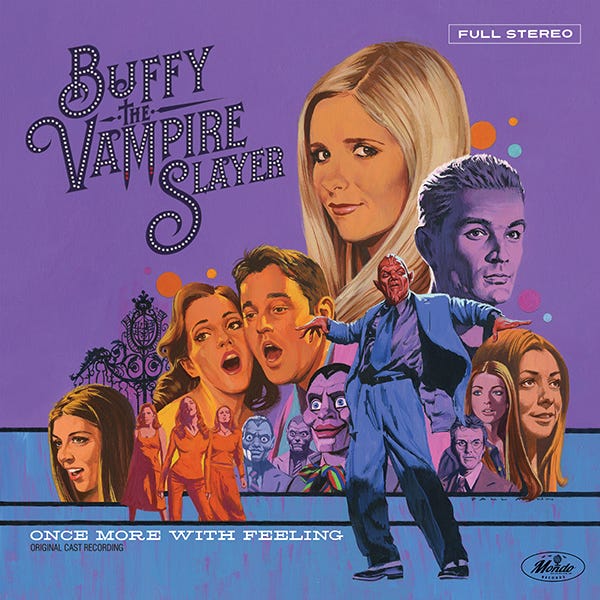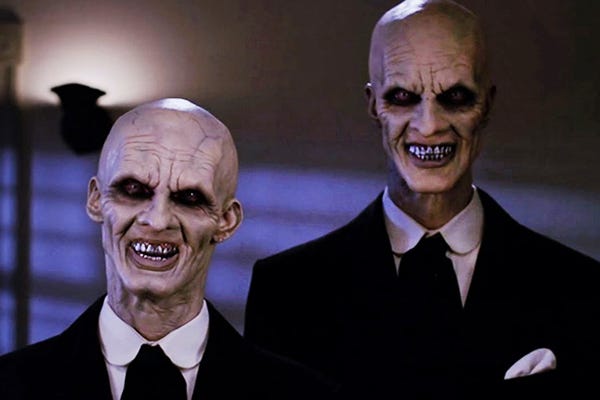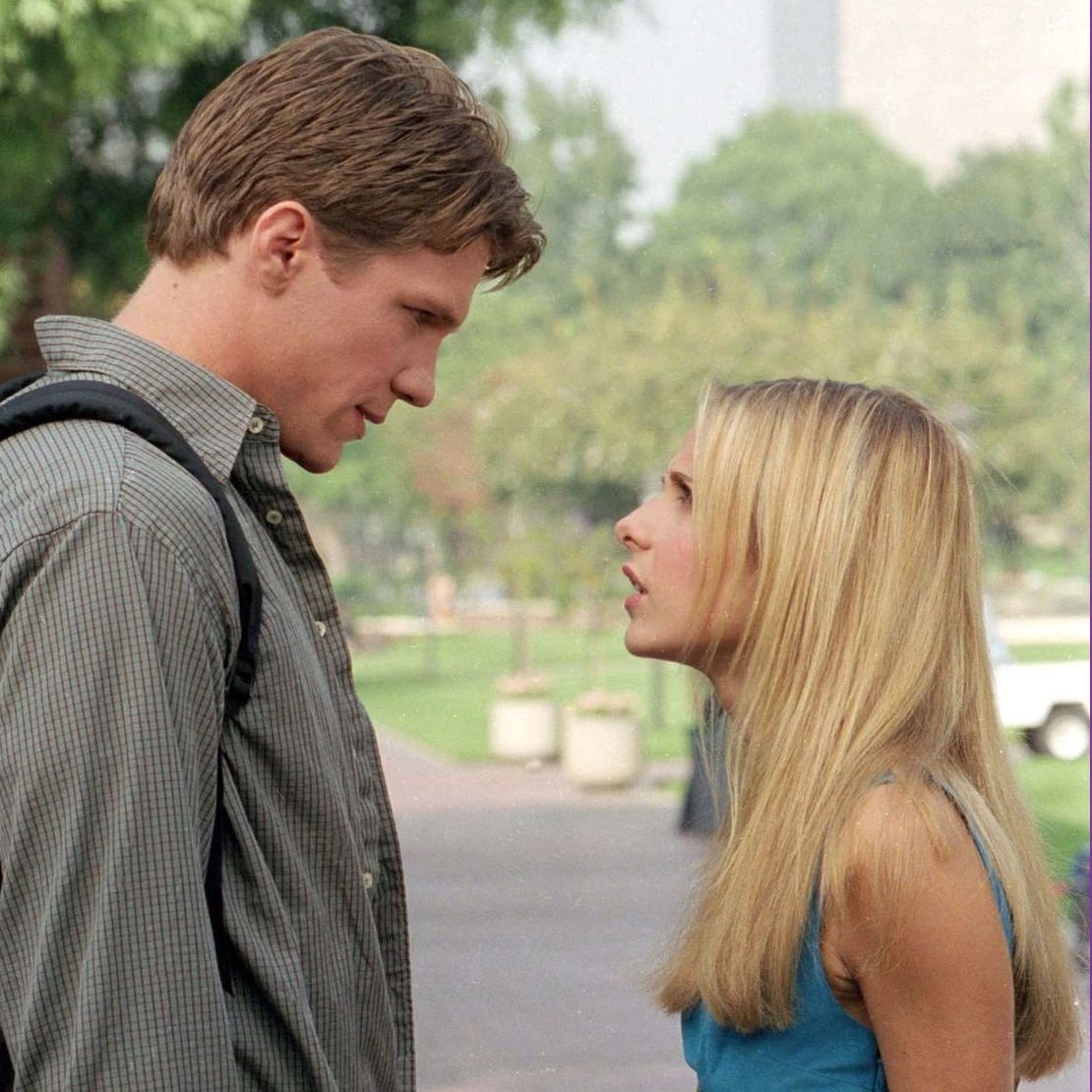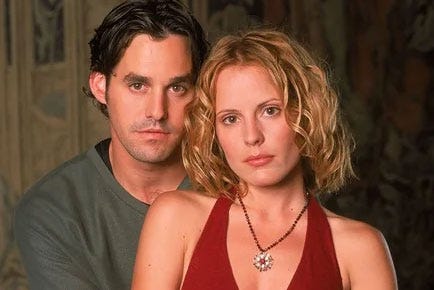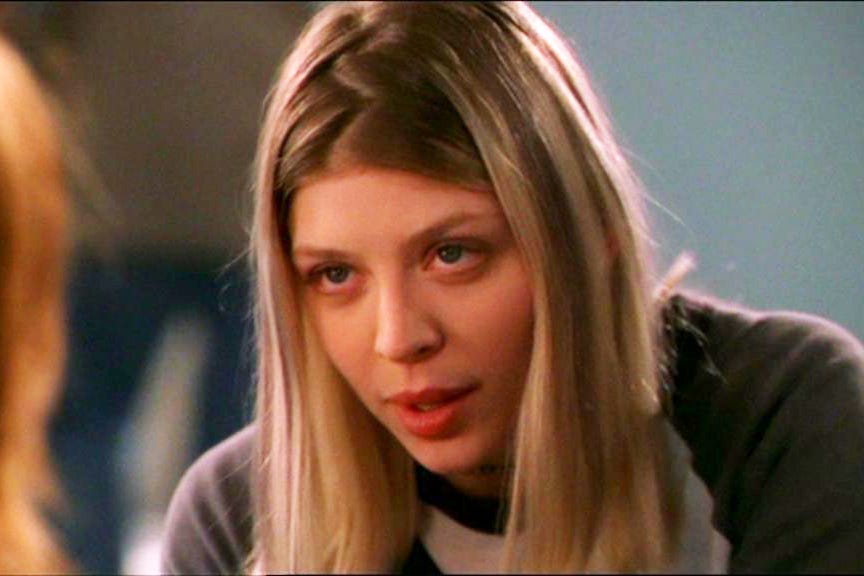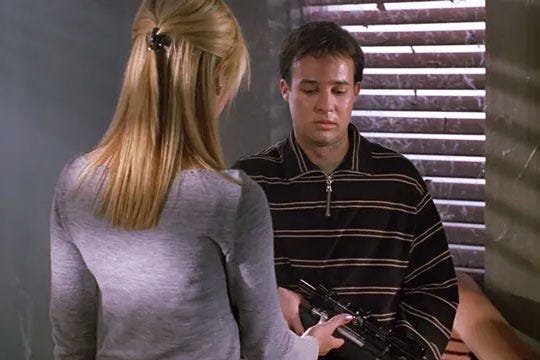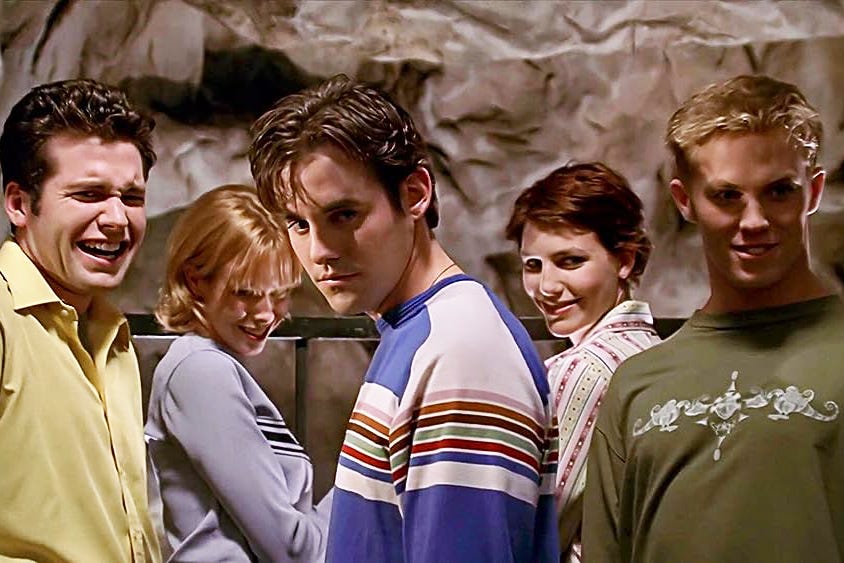Slaying Silence: The Significant Impact of Sound in Buffy the Vampire Slayer
The soundtrack of silence, songs, scores, and sound in BTVS
** This article contains spoilers!**
Words have power. So does silence; a well-placed song; an instrumental interlude; a commanding—or subtle—sound effect.
Known for its witty dialogue and comedic quips, Buffy the Vampire Slayer has also made an impact when it comes to the subject of sound.
Threaded throughout this ground-breaking supernatural television series, silence; songs; scores; and sound play a significant role—especially in the critically-acclaimed episodes “Hush” and “Once More, With Feeling,” from Seasons Four and Six.
Seven seasons in total, this beloved TV show has given its fans many episodes that have left a lasting impression. Woven within those seven seasons, the usage—and absence—of sound in its many forms, creates a thrilling tapestry that stimulates our senses, and captivates our minds.
“Empty silence” is when a scene or sequence is completely devoid of sound. There is no dialogue, and no musical score. A long stretch of silence often subverts audiences’ expectations, leaving them either awestruck, or unimpressed. Depending on the execution, this story technique may, or may not, pay off, but Buffy the Vampire Slayer has proven time and time again that this technique can work quite effectively.
Within the series, there seems to be a correlation between death and silence. The most obvious—and steady—example of this is in the episode titled, “The Body,” where silence is utilized in the most painful and provocative way possible.
However, in various other episodes, there are several key moments when diegetic sound—any sound that emanates from the story’s unique world—propels the narrative forward after a loss of some kind.
Music is an additional character considering it plays such a vitally important role in all seven seasons. Even Oz, one of the show’s early main characters, plays in a band called “Dingoes Ate My Baby” that occasionally performs in a scene.
The BRONZE is the local hangout for “The Scoobies” and other Sunnydale students. It is a place where live music is performed, and a Slayer can let off a little steam. According to Sunnydale High cheerleader, Cordelia Chase, “the BRONZE. It’s the only club worth going to around here. They let anybody in, but it’s still the scene. It’s in the bad part of town.”
Bad part of town aside, this favorite venue still managed to attract top-notch musicians. Over the years, the BRONZE featured numerous well-known, and up-and-coming musical artists, including: Sprung Monkey; Nerf Herder; Aimee Mann; Michelle Branch; Angie Hart; The Breeders; Cibo Matto; and K’s Choice, among others.
Songs—and the musicians who perform them—add extra layers to a scene, helping to increase the emotions that are being experienced by the viewer. When the music matches a scene—perfection is achieved.
The right song, or subtle theme, enhances each scene, and the overall episode. Take for instance, the iconic theme song for Buffy the Vampire Slayer by Nerf Herder. It not only indicates what kind of character Buffy is, it also sets the tone for the entire series.
The “Buffy-Angel Love Theme” and the “Buffy-Riley Love Theme” both contain “heart-swell” music that add to the moments these couples are seen together onscreen. Christophe Beck’s poignant and moving scores elevate the show to a new level. Sometimes being subtle is better than being bold. A subtle score has the ability to transform a scene in a deeply moving way.
In addition to several releases showcasing Christophe Beck’s beautiful score, the series has two soundtrack albums, as well as the soundtrack to the musical episode, “Once More, With Feeling.”
Although as equally essential as other aspects of the show, music is a vitally important aspect that, unfortunately, often gets overlooked.
Sound effects are another driving point on Buffy the Vampire Slayer. Throughout every episode, both major and minor sounds used help create atmosphere in a scene, as well as a more fully-formed world onscreen that allows viewers to completely lose themselves in the story.
The screaming; growling; howling; hooting; chirping; crashing; crunching; honking; splashing; laughing; and whispering, etc. adds texture and legitimacy making the “story” of a scene more believable.
It’s clear that although speech may be highly-valued among the “Slayer” and her steadfast “Scoobies”—the cacophony of sounds that create the soundtrack to Sunnydale, are just as significant.
Silence and Songs in Sunnydale
Two episodes in particular, “Hush” and “Once More, With Feeling,” are sensational standouts. They highlight the dynamic way that silence and songs are utilized in the Buffy the Vampire Slayer series, as well as showcasing the contrasting use of sound and the themes that are explored.
In one, they held in and hid their emotions and feelings, while in another, they exposed and explored their fears and struggles. The contradiction of suppression versus expression is a major theme in these two episodes.
With a majority of “Hush” lacking dialogue, it is reminiscent of the silent film era where films played with musical accompaniment that matched the visuals onscreen. Juxtaposed with “Once More, With Feeling,” we are transported to the time of musicals, especially when Xander and Anya perform a retro duet infused with a bit of comic relief.
The characters’ voices in “Hush” are suppressed. They have difficulty in the beginning expressing their issues and fears with one another. Then, they become cursed, and their voices are taken. Unable to voice—in words—the feelings they are feeling, they must find other ways of communicating to those around them.
“Once More, With Feeling” illuminates the opposite challenge. Instead of being suppressed by a curse, the characters are compelled to sing about their feelings and fears—and can’t stop sharing the truth. All barriers to suppressing their secrets have been stripped away, and each character feels a prompting within to share their anxieties, while also revealing something they have kept hidden.
Furthering the narrative, each song stands out in its own unique way—some with humor, others with raw emotion and vulnerability. Both episodes were written and directed by series creator Joss Whedon.
“Hush” Season 4, Episode 10, aired December 14, 1999
It is in silence that we discover who we are—and what we truly want.
Oftentimes, it is in those moments when the talking stops, that true communication begins.
Nominated for an Emmy Award in “Outstanding Writing for a Drama Series,” as well as “Outstanding Cinematography for a Single Camera Series,” “Hush” is an episode of television that received high praise when it first aired. It is unlikely that it will ever be ‘ripped from the hearts’ of staunch “Scoobies.” For many, it will remain a fan favorite.
“Hush” focuses on a group of frightening fairytale ghouls who invade Sunnydale with the intention of stealing seven hearts. However, they first must steal the voices of their victims so they will be unable to scream. Only the voice (and scream) of a human can reverse the curse and destroy them.
There are only about seventeen minutes of dialogue in the whole episode, and by fourteen minutes in, the voices of everyone in town are stolen by Gothic Fairytale characters called “The Gentlemen” who glide through Sunnydale in search of their next victim. Their grace and polite manner are unsettling. If you are brave enough to look, the faces of these chilling characters just may burrow their way into your brain. These are certainly some of the creepiest creatures in cinema history!!
The theme music for these horrifying heart-stealers may feel slightly ethereal, however, the haunting sound will wreak havoc on your blood pressure.
Extended sequences of silence add a deeper, more emotional feeling to a story, as well as create an intense level of suspense. It is in those silences that characters (and us as individuals) have a chance to reflect.
Sometimes spoken language can mask the truth of a situation, and it is only when it is stripped away that the truth hidden underneath the layers is revealed and the real conversation can begin.
While there may be no dialogue for much of the episode, the score and sound effects carry us through scene-to-scene, enhancing the emotions portrayed by the characters—and delivering a powerful punch.
Since there is so much silence, the sounds and music are more pronounced and intense. Every sound is magnified. Examples include: when a student at UC Sunnydale drops a glass bottle on the ground and it shatters; the sound of rattling from the buckles on the straightjackets of “The Gentlemen’s” henchmen as they chase Tara across campus; when a fearful Tara pounds on the dorm room doors; the sound of the bell clanging in the clock tower after a creature that Buffy and Riley are fighting crashes into it; and when “The Gentlemen” are clapping.
Having a majority of the episode free from dialogue allows viewers to focus on a voiceless community and their attempts—sometimes comical—to communicate with one another. It is an examination of how a society is disrupted when communication breaks down. With dialogue deleted, the dynamics of the town can be fully observed.
Lack of dialogue is replaced by music, and the music acts as a narrator of sorts, leading viewers through the story.
Haunting music highlights scenes, heightening fears and increasing the intensity factor. Combined with frightening visuals, your heart just might pound through your chest.
The episode opens with Professor Walsh stating how communication and language are “not the same thing.” This description sets the stage for the story that is about to unfold, and the growth arcs that the characters are about to experience.
“It’s a babble-fest,” Buffy says to Willow about her and Riley. Buffy and Riley talk a lot, but don’t say much to each other. Instead, they hide the truth of who they truly are, and their abilities.
In the beginning of the episode, as they are walking through the campus, both Buffy and Riley lie to each other about their plans for that evening. Buffy almost lets it slip that she is going patrolling, instead muttering something about “petroleum,” which only confuses Riley further. And Riley covers up his late-night “Initiative” shenanigans by saying he has to grade some late papers. This confession leaves Buffy perplexed. It’s clear they are both aware they’re not being completely forthright with one another, however, that doesn’t stop them from lying to cover up their after-hours activities, keeping a well-maintained emotional distance.
By the end of the episode, Buffy and Riley are forced to communicate and confront each other and the secrets they have been keeping. In the final battle scene, Buffy and Riley come face-to-face with one another while fighting “The Gentlemen” and their henchmen, after tracking them to their clock tower lair. As they are fighting, they turn, drawing their weapons directly at each other in a commanding pose ready to protect themselves. They are shocked at this unexpected discovery. The truth of who they really are is finally exposed. Their secrets are revealed, and they can no longer hide their real identities from one another.
During the final scene, Riley visits Buffy at her dorm room. “Well, I guess we have to talk,” Riley says. “I guess we do,” Buffy replies. Then, they proceed to not talk. They sit perched on the ends of opposite beds, uncomfortably shifting in place.
The viewing audience is left staring at them, as they stare at each other awkwardly.
In silence.
In this particular moment, silence devours the scene like a snake consuming its prey.
Another couple in this storyline that suffers from communication issues are Xander and Anya. They constantly have emotions running high and misread situations. While Anya is craving to know where she stands with Xander and if she means anything to him at all, Xander can’t seem to express—in actual words—just how much she does mean to him. During this episode we continue to see their struggles and watch as their communication issues escalate. Anya feels neglected and doesn’t believe that Xander needs her.
Spike mocks Xander in a playful tone about Anya and her need for him. “Xander… Don’t you care about me? We never talk,” Spike says. Later, when everyone is struck silent from the curse, Xander misreads a situation concerning Anya and Spike when he witnesses Spike, with blood on his mouth, leaning over Anya as she peacefully sleeps. Xander jumps to the incorrect conclusion regarding the situation and proceeds to attack Spike, punching him repeatedly until Anya steps in and breaks up the fight. They begin to bicker, leading Xander toward a confession (albeit silently) that he really does care about Anya.
Tara, a newer character to the “Scooby Gang,” has an emotional arc of her own over the course of the episode, growing from weak Wicca to a strong Sorceress. She is shy and awkward in the beginning, a meek girl who morphs into a confident woman. Practically non-verbal in the Wicca group she and Willow attend, when she finally finds the nerve to speak up, she is accused of having energy that sucks the power from “The Circle.”
Although scared to speak, bravery overtakes her during the curse. After studying various spell books, including one with a chapter titled “Spells of Speech and Silence,” Tara bravely sets out across campus to find Willow so they can perform a spell that will save the town.
After Tara literally crashes into Willow as she is trying to escape “The Gentlemen,” they end up hiding in a room together. By clasping their hands, they are telepathically able to move a vending machine against the door for protection. The visual of their hands coming together speaks volumes—about the powers that they possess, and where their connection may lead.
Tara finds her “voice” by the end of the episode—literally, but also in a figurative sense, because she talks with Willow more confidently, and with the courage of someone who has nothing to lose.
Wit can still occur in the absence of speech, as “Hush” so vehemently proves. Amidst the silent screams and mis-read signals, classic “Buffyverse” humor remains throughout the episode. Unintentional innuendos and inappropriate comments are still infused into the story without dialogue. Humor is present and portrayed, even in silence.
“Hush” may be considered dated because of its lack of technology, however, it still draws viewers in and refuses to release its grasp. Honestly, it is so engaging that there is barely time to contemplate what is lacking. Surely, if the residents and students of Sunnydale had cell phones with texting, or access to social media, they may have hidden behind the screen to handle their fears and would have remained stagnant in their growth process.
The closest thing relating to text-to-speech is the archaic computer with a robotic voice that Professor Walsh uses to communicate with her “Commandos.”
Lack of technology is beneficial to the episode, as is the case with many television shows and movies from that period of time. The characters are literally forced toward each other, propelling them to fight for their freedom—instead of hiding behind a screen.
“Hush” is also a statement on censorship and freedom of speech. “The Gentlemen” mysteriously remove the voices of all the Sunnydale residents while they sleep so that no one can hear their screams when these gruesome Grimm-like creatures rip the hearts from the chests of their fearful victims. Subtextually speaking, “The Gentlemen” represent government officials who take pleasure in restricting speech. They are authoritarian leaders who get their way by silencing any dissenting voices.
Exploring issues related to the limits and benefits of language, “Hush” shows how reliant we are on the sound of our own voice. Without it, it presents a challenge that we must overcome in order to keep moving forward. “Having a voice” doesn’t necessarily mean only having a literal one. It also means having control—and a say—in the way we choose to live. Sometimes those with the loudest voices say nothing of value at all. While those who may be more silent, scream what is truly important through their actions.
This is an episode that may be bathed in silence, however, there is still so much being said. Communication may, at times, be inhibited by speech, however, “Hush” highlights the importance and value of the spoken word—and the catastrophic consequences of its loss. Although “Hush” is mostly voiceless, it still speaks volumes.
Buffy refuses to stand silently by and accept the situation as it is. She may have lost her voice, however, she hasn’t lost her conscience (or her heart)—and she fights for the sake of everyone. After one more brief signal misread by Riley about what object on the table to break during a brawl with “The Gentlemen” (and their minions), he finally smashes the box from Buffy’s dream that contains the captured voices of Sunnydale’s residents. This final act of miscommunication solidifies that they still have some things to work out between them. When Riley shatters the box, all the “voices” are returned to their rightful owners, including Buffy. Buffy’s scream explodes the heads of “The Gentlemen,” restoring order to this sleepy supernatural town.
In this fairytale, Buffy is the hero—not some damsel in distress. She may be the “princess” of the story, however, she is a powerful princess whose scream saves the day—and the town of Sunnydale.
“Once More, With Feeling” Season 6, Episode 7, Aired November 6, 2001
Television musicals are notorious for over-promising, and then falling short and not living up to expectations. However, “Once More, With Feeling” is not simply a throwaway musical episode. It’s not a dream sequence, or any other clichéd plot device. There is actual plot movement and exposition, and the songs push the narrative forward.
There is even a certain self-awareness that the episode has about itself. “The Scoobies” are a bit apprehensive at first about having to sing and dance, eventually giving in. Full of meaning and emotion, each song examines the characters struggles and fears. The songs are true to each individual character and their respective personalities. Instead of repressing what they are feeling like they did in “Hush,” everyone’s anxieties and inner conflicts emerge through a song and dance number.
Although it aired over twenty-years-ago, “Once More, With Feeling” continues to have an impact on musical storytelling within the sphere of television—and is one of the best musical episodes ever made!!
And, just like “Hush,” it was also very well-received when it aired, especially because it still contained the wit and humor that die-hard fans had become so accustomed to.
Created for the Buffy fandom, it was an “event episode” that brought viewers together in an unusually fun way. For a brief period of time, it was shown in theaters for fan-driven, interactive sing-along events. During the episode, Buffy even breaks the fourth wall, stares directly into the camera during one of her musical numbers, and tells the audience, “You can sing along!!”
The musical episode came during a time when fans were still reeling from the show changing networks, in addition to accepting some of the changes that these well-loved characters were going through.
“Once More, With Feeling” may have infused a bit of quirkiness into the series, however, it is also an episode full of depth, emotion, and meaning. It confronts head-on the struggle with depression, and the feelings of loneliness that claw at our core.
All the characters lament their struggles by singing. Slowly, secrets leak out, steadily revealing themselves throughout the episode and each song that is sung.
The episode opens with Buffy walking through a cemetery in song. She sings the lyrics, “Nothing here is real… Nothing here is right” and “I’ve been going through the motions” from the song “Overture / Going Through The Motions.” These are human emotions that we’ve all certainly experienced at one time or another.
The format of a musical, and the compelling lyrics written and sung in a raw, honest way, make this episode (and its storyline) digestible and relatable in a manner that perhaps a standard format wouldn’t have.
Exploring the changes in the relationships of the main characters, “Once More, With Feeling” focuses on a slick, zoot suit-wearing, singing, tap-dancing demon credited as “Sweet”—but unnamed in the episode—who compels the townspeople of Sunnydale to break out into song and dance at random moments to reveal anxieties and secrets that they have been keeping hidden from friends and loved ones. As the musical gets underway, all of “The Scoobies” “have a theory” regarding what might be going on—and they sing about it!! While Anya’s “theory” is all about “bunnies,” some of the other “Slayer Players” have more reasonable theories.
At the end of the fifth season, Buffy dies. Again. She sacrifices herself in place of her younger sister, Dawn, so that she can save the world. Believing that Buffy is in Hell, Willow uses magic to bring her back from beyond the grave. However, Buffy was at peace, in a place that she felt was Heaven. She kept this traumatic secret hidden from her friends until the words finally came out in song. Lost, and lacking inspiration to perform her Slayer duties, she has simply been “going through the motions.”
One of the most poignant lyrics in the episode is when Buffy sings about being pulled from Heaven. It’s devastatingly honest and an emotional refrain that pierces deeply. The heartbreak and guilt can be clearly seen on the faces of her friends, especially Willow. Although they are happy to have their friend back, they see now that their selfish desires brought her an immense amount of pain and suffering.
There was no pain
No fear, no doubt
’Till they pulled me out
Of Heaven
So that’s my refrain
I live in Hell
’Cause I’ve been expelled
From Heaven
I think I was
In Heaven
So, give me something to sing about
Please
Give me something
-From the song, “Something to Sing About.”
As Buffy is singing how she needs “something to sing about,” the emotion in her eyes is overwhelming. When she lacks words regarding what to say, and begins to spin out of control, Spike steps in and stops her, saving her from a fiery death. “The pain that you feel, you can only heal… By living,” he croons.
It may seem strange that Spike is suddenly caring about the “Slayer” and her well-being, however, one of his earlier songs revealed the shocking revelation regarding his new-found feelings for Buffy.
In a more light-hearted musical number, Xander and Anya transport viewers back in time to the musicals from yesteryear. They perform an energetically quirky, retro duet called “I’ll Never Tell” that Anya feels “is a retro pastiche that is never gonna be a breakaway pop hit.” In a performance that rivals the best bickering onstage, and a song-and-dance routine reminiscent of Fred Astaire and Ginger Rogers comedies, this comedic couple lyrically works through their fears and anxieties.
Joss Whedon spent six months writing “Once More, With Feeling,” and this was the first time he had ever written music.
Whedon wanted to make a musical episode since the start of the series—and the time was finally right. An impressive execution of a monumental task, the sheer musicality of this massive episode sang.
Sarah Michelle Gellar went above and beyond regarding the preparation and learning necessary for the song and dance routines that she would be required to perform.
In this all-out ‘master’-ful musical episode, simply put, Gellar slayed.
“Where Do We Go From Here?”
Each episode in this stellar series utilizes the various elements of sound, along with silence, to not only highlight a specific scene or moment, but to push the story forward as well. Since television is a visual medium, it is imperative that the images onscreen are always stunning and evocative.
However, certain episodes in particular—in addition to “Hush” and “Once More, With Feeling”—use songs; scores; and sound (or the lack of them) to enhance the emotions that the visuals are provoking. Other episodes where sound—or the absence of it—play a prominent role include: “The Body”; “Earshot”; “I Only Have Eyes For You”; and “The Pack.”
“The Body” (Season 5, Episode 16) will break your heart. It’s a visceral, visual story mostly devoid of sound, and filled with a tremendous amount of emotion. Buffy loses her mother and is overcome with shock and grief. Having lost my own mother, my experience was the most similar to the way losing a loved one is depicted in this particular episode. The way I reacted in real life is almost identical to Buffy’s reactions (and expressions). It was the closest representation to reality than anything I ever saw portrayed onscreen in television or film ever before.
Consumed by shock, disbelief, and denial, Buffy struggles to accept the reality of the situation. All the characters do. The look on Buffy’s face from scene-to-scene is simply heartbreaking.
Filled with frantic energy and a whirlwind of emotions, the moments that aren’t full of dialogue, are full of silence and diegetic sound. The clinking of wind chimes outside grows louder as Buffy vomits on the floor. As Buffy opens the door, sounds of life are occurring outside, as silence, a surreal feeling, and a state of confusion consumes the spaces inside the house. The camerawork is an additional language being spoken in this episode. The jagged camera shots frame the situation the way this new reality is feeling for Buffy—jumbled and out of frame.
“Earshot” (Season 3, Episode 22) is an intense episode where Buffy gains the aspect of a mouthless demon she killed because some of its blood absorbs into her skin. She ends up with the power to hear the thoughts of others. At first, she hears thoughts individually, however, soon they merge in her mind, becoming indecipherable. As she is walking toward a table to sit down for lunch, she clearly hears the voice of someone say, “This time tomorrow, I’ll kill you all.” Her tray of food crashes on the cafeteria floor. The voices get louder, devouring her head—and the scene.
Later, she tells Giles, “It’s this invasion in my head… It’s like there’s these strangers walking around in there.”
The strong score and sound effects only enhance this particular episode, and its subject matter.
“I Only Have Eyes For You” (Season 2, Episode 19) is a hauntingly heartbreaking episode that transports viewers back in time to the year 1955. It intertwines Buffy and Angel’s love story with that of a couple whose love ended in tragedy. Dealing with the themes of forgiveness, regret, and second chances, it is beautifully done.
The dialogue and music transitions in the opening are seamless. At first, an ethereal, dreamy, romantic song is playing in the background at the BRONZE where Willow and Buffy are talking about love. Buffy states how she isn’t “in date mode right now” and how she just isn’t ready to put her heart back out there. She states how Angel went bad and is now “killing her friends” after an impulsive night they shared together. Willow says, “Love isn’t always like that. Love can be… Nice.”
The scene does a hard cut, transitioning to Sunnydale High at night. A young couple is arguing, and the young man grabs the young woman’s arm, shouting, “Come back here. We’re not finished!!” The music becomes more dark, sad, and sinister.
It’s clear the couple is arguing about love. The young woman says she doesn’t love him. “It doesn’t matter what I feel,” she says. The young man responds by saying, “A person doesn’t just wake up one day and stop loving somebody.” He points a gun at the woman and cries out, “Love is forever.” A change of music heightens this already tense scene.
At a later point in the episode, Buffy is in Principal Snyder’s office after he leaves her alone for a bit. A Sunnydale High yearbook from 1955 falls off the shelf as a haunting musical interlude plays.
Throughout the episode, music continues to enhance the emotions in many of the scenes creating an evocative effect. The music in this episode clearly and dynamically sets the tone and atmosphere.
“The Pack” (Season 1, Episode 6) entertains a more carnal storyline that shines the focus on Xander. In his attempt to rescue a student from some schoolyard bullies, during a Sunnydale High field trip at the zoo, he unknowingly gets cursed at a hyena exhibit that is in quarantine—later becoming “leader of the pack” for his new group of non-furry friends.
The zoo sounds in the beginning of the episode create the necessary atmosphere for the story being shaped, and subtly set the stage for what’s to come. The maniacal laughter of the infected students, and Xander’s new sinister music, add a chilling feel that is rather unsettling.
Each of these episodes showcases the importance regarding silence and sound onscreen. More than just dialogue is necessary for a show to feel fully fleshed out, and help move the story along. Silence; songs; scores; and sound play a significant role within the world of Sunnydale.
Buffy the Vampire Slayer broke new ground when it came to episodic television, setting higher standards for narrative storytelling going forward, especially after “Hush” and “Once More, With Feeling” were added to the Buffyverse canon. They forever remain favorites among many of the show’s dedicated ‘watchers.’ These episodes—and the series as a whole—will always leave fans with “Something To Sing About.”
Want more?
Calling all Buffy fans! Would you love to attend watch parties and other events celebrating Buffy and Angel? Come join us on our discord where you can find other Scoobies just like yourself conversing daily about these shows and the Buffy movie. Check back here all month for content on your favorite slayer and vampires, and follow us on Instagram for exclusive slayer content!



